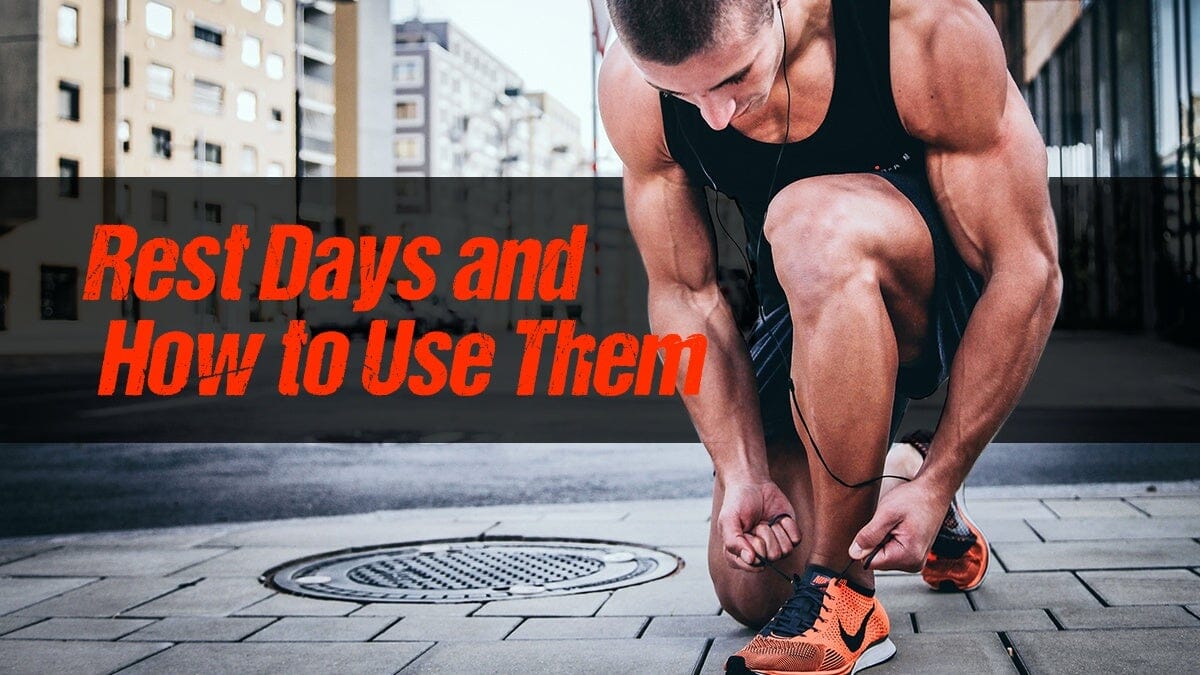Rest Days and How to Use Them

Taking too many rest days results in undertraining and slow progress on your athletic goals while taking too few rest days results in overtraining and plateauing on your athletic progress. An athlete that is performing the same type of workouts six days per week, or is training at a high intensity of nearly 100% of training days, is at risk for overtraining. Conversely, a climber that is only working out three days a week and sits on the couch the remaining four days of the week is probably undertraining.
When most people think of a rest day, they think of zero physical activity and a long day on the couch. While there can indeed be benefits to having a lazy rest day with almost zero physical activity, most climbers would benefit by incorporating active rest days into their routine.
By combining “recovery workouts” into your schedule, you can still rest your climbing muscles while simultaneously improving your fitness and flexibility. It’s up to you to decide if you’re an undertrainer or overtrainer and adjust your workout regime accordingly. However, we argue that many climbers will significantly benefit by mixing in a few non-climbing workouts.
The next time you have a 100% rest day planned with no physical activity, decide if you need the entire day off from training. If a recovery workout seems like a good idea, consider one of the following activities for a more active “rest day.” Similarly, you might need a mental break from the climbing gym, taking the time to do a little cross-training can be a great way to recharge and stay motivated.
Our Favorite Recovery Workouts
Yoga
This activity has been growing in popularity among climbers in recent years, and with good reason. Yoga can serve as a fantastic way to strengthen your core strength while simultaneously moving through a variety of stretches. Keeping your body flexible is an essential element of fitness. Being a little more limber will help prevent overuse injuries that creep up over time, and will also make many awkward climbing positions more bearable on your next long route.
Running
An endurance run was the favorite cross-training activity of climbers for several decades and is still a favorite workout among many mountaineering athletes today. Running engages the entire body, and is a phenomenal cardiovascular workout. An easy run can be an excellent way to loosen up stiff muscles and build aerobic fitness. Your body will thank you the next time you’re on a long climb.
Running doesn’t get along with everyone, and some people feel the activity is hard on their feet and knees. Make sure you’re wearing proper shoes, and be careful not to push too hard. You shouldn’t feel crippled after a run, whether it’s short or long (and especially not if it’s an active rest day).
A Long Walk or Hike
Walking is something that most humans should be doing more. This could be the most underutilized but crucial physical activity on this list. Humans evolved to be good walkers, yet we seem to spend most of our day sitting down in cars and office chairs.
Walking can have excellent health benefits and is fantastic for increasing your longevity. So get off the couch and go for a walk around the park or a hike in the mountains. It’ll be a great way to enjoy the scenery while simultaneously making you less stiff for your next climbing workout.
Walking is a great alternative for those who are uninterested in going on a run but would like to build a similar type of fitness. If you’re interested in making your rest day a little more active, try speed walking. Speed walking is an Olympic sport, and an aerobic workout that’s easy on the joints. Similarly, pick a more strenuous hike if you’re in need of a cross-training workout.
Swimming
Watersport engages your entire body in a non-weight bearing workout. Since the water takes most of the weight off of your body, swimming is a workout that’s easy on your joints and ideal for rest days. That being said, swimming can also be an intense aerobic and muscular challenge. If you’re interested in an active rest day, swimming some laps in the pool will engage your entire body.
There are many variations to swimming as well. You can experiment with using different strokes or performing intervals/sprints. Further, if your shoulders are sore from climbing, you don’t have to use them at all, pick up a board and kick your way around the pool.
Foam Rolling
If you’re brand new to foam rolling, foam rollers are the cylinder objects you see lying around your gym. They’re usually made of dense foam, but some are rubber with a plastic core. The idea is you lay down on top of the cylinder, and roll around to limber up your sore muscles. It takes some getting used to (it feels like torture if you’re stiff), but foam rolling is an effective way to get rid of your knots and heal sore muscles.
Even if you’re not interested in participating in a recovery workout, you can at the very least pick up a foam roller. If you don’t already own one, most gyms have a few that you can try out. Foam rolling is a simple yet effective way to aid your recovery, and it can be done while you enjoy your favorite Netflix show.




